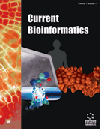
Full text loading...

Echinococcosis, a parasitic disease caused by the larvae of the Echinococcus parasite, poses a serious threat to human health. Medication is an indispensable means of treatment for Echinococcosis; however, due to the less satisfactory efficacy of single drugs, identifying effective drug combinations for the treatment of Echinococcosis is essential. Yet, current predictive models for drug synergy in Echinococcosis face accuracy challenges due to data scarcity, method limitations, and insufficient feature representation.
This work aims to design an end-to-end method to predict drug synergistic combinations, which enables efficient and accurate identification of drug combinations against Echinococcosis.
In this work, an end-to-end method, named DSPE, is proposed for predicting anti-Echinococcosis drug synergistic combinations. In DSPE, a dataset of Echinococcosis drug synergistic combinations is constructed by retrieving and extracting information from related scientific articles. Further, DSPE employs a residual graph attention network to deeply analyze drug characteristics and their interactions, thereby enhancing the performance of deep learning models. It also explores the protein-protein interaction network related to Echinococcosis, using node2vec combined with an attention mechanism to efficiently encode disease features. Finally, it predicts the synergy of drug combinations based on the Bliss score by integrating drug combinations and disease features.
Experimental evidence shows that DSPE outperforms five state-of-the-art algorithms in predicting drug combination effects by leveraging disease-target information and single-agents for the treatment.
DSPE improves prediction accuracy and addresses the issue of data scarcity for new diseases, offering new insights and methods for the development of treatment plans for parasitic diseases in the future.